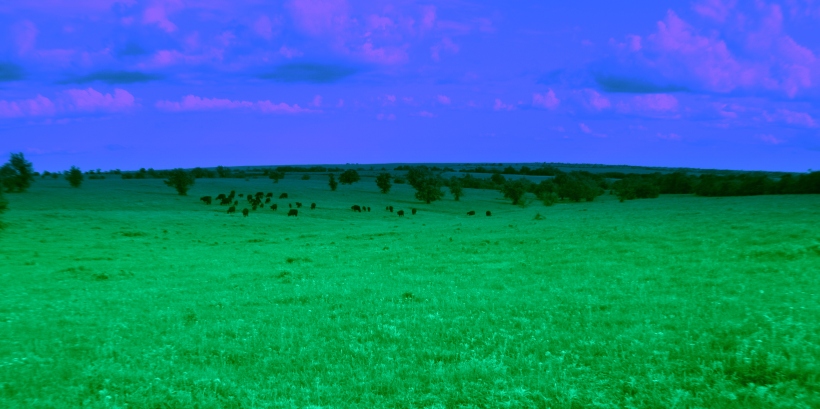Kansas Grass Fed Beef–Rhino’s Beef™
At Rhino’s Beef™, we’re as much about the prairie as we are about the beef: all-natural, free range, 100% grass-fed and grass-finished. Rhino’s Black Angus™ are a composite herd, the predominant contributor being black Angus. Our cattle are raised in a low stress, humane, conscience driven, sustainable manner, without hormones or antibiotics (see Our Standards).
This is our focus: tender beef. That focus strengthens the portion of our business devoted to supplying grass-fed producers with Rhino’s Black Angus™ superior stocker/feeder calves and breeding stock. At the same time, staying committed to supplying small producers with breeding stock and innovative products like The Eisbreaker™ hones our own ability to deliver quality grassfed beef.
Our genetically “off the grid” herd thrives on grass while producing tender, affordable beef.
Principally, we raise grass fed beef because this production model makes the best use of our resources. Grass is what we have, and plenty of it. Nevertheless, we know two things: One, this beef is tender, tasty and healthy. Two, without the love and support of a lot of people, we would not be able to produce this beef. God willing, we will continue to raise beef this way, the way our ancestors did, for a good many years to come.
Consumers increasingly are demanding healthy beef, produced transparently with minimal detrimental effects on the environment. The first graders in our survey are a case in point.

We are honored and blessed to be able to carry on the traditions of the many generations of Kansas ranchers who have come before us, some arriving here as early as 1854. These men and women, along with countless others, are the reason America’s commercial beef industry is in a position to continue to lead the world for a long time to come.
Jim Hoy’s 2009 essay in the Symphony in the Flint Hills Field Journal, Cattle in the Flint Hills, reminds us that we are not the first to be enveloped by the splendor of this space.
A recent study by researchers at South Dakota State University found that more than 1.3 million acres of grassland were converted to other uses between 2006 and 2011, the highest rate of grassland conversion in the heartland since the 1930s. Native bluestem is altogether different from lawn grasses. It can withstand several successive years of drought, abuse or neglect, but native bluestem is very difficult to reestablish after it have been converted to other uses.
